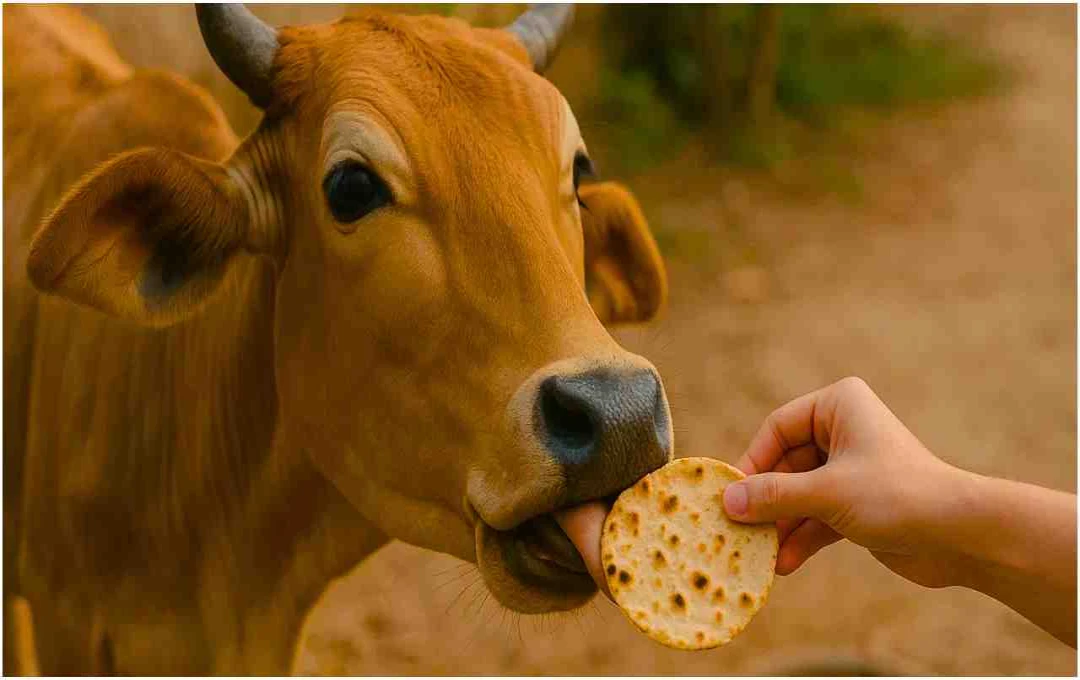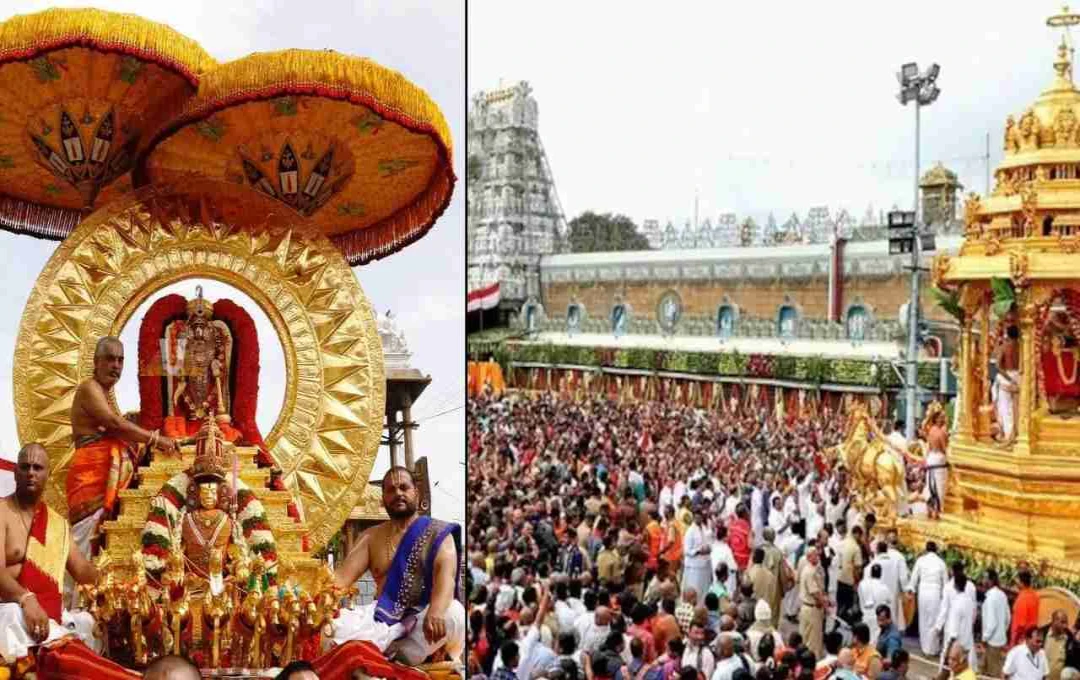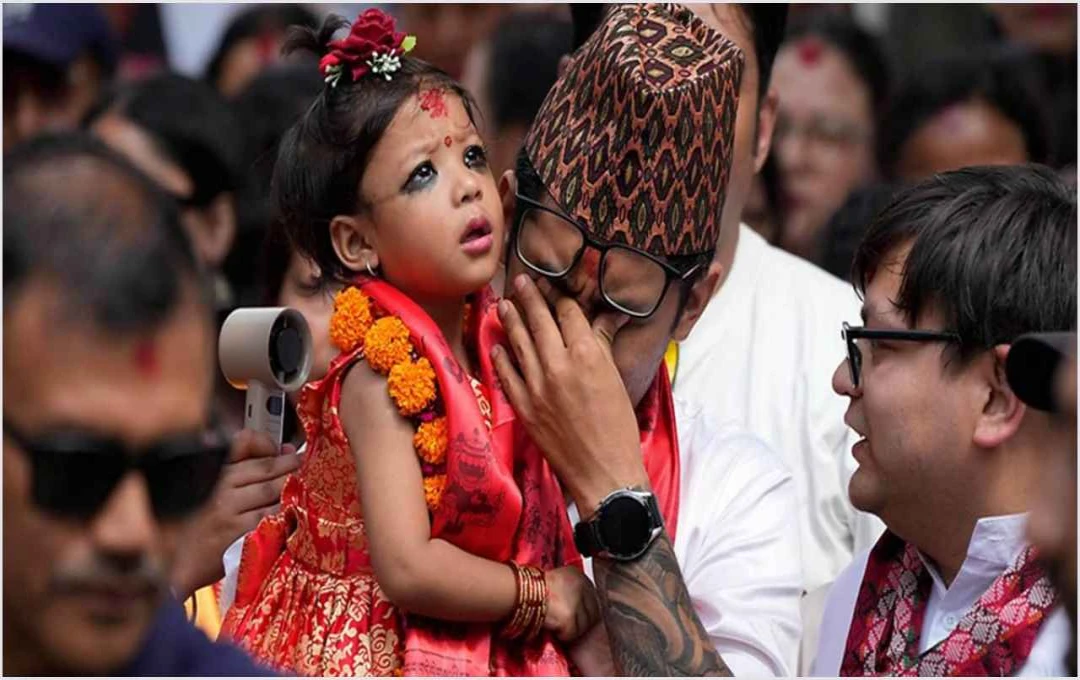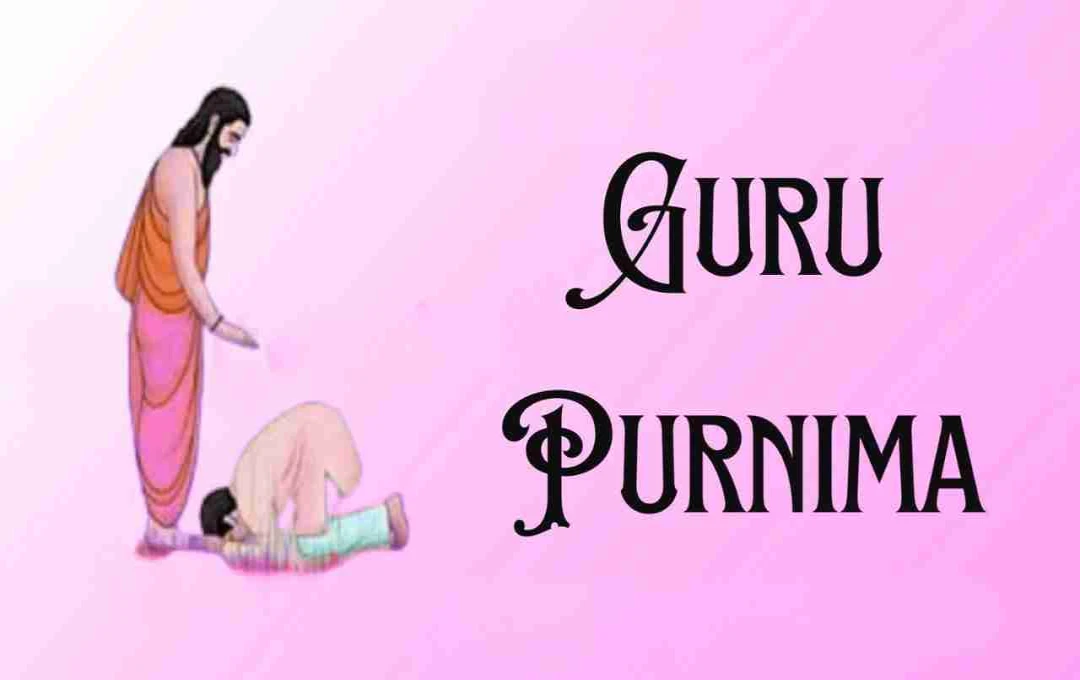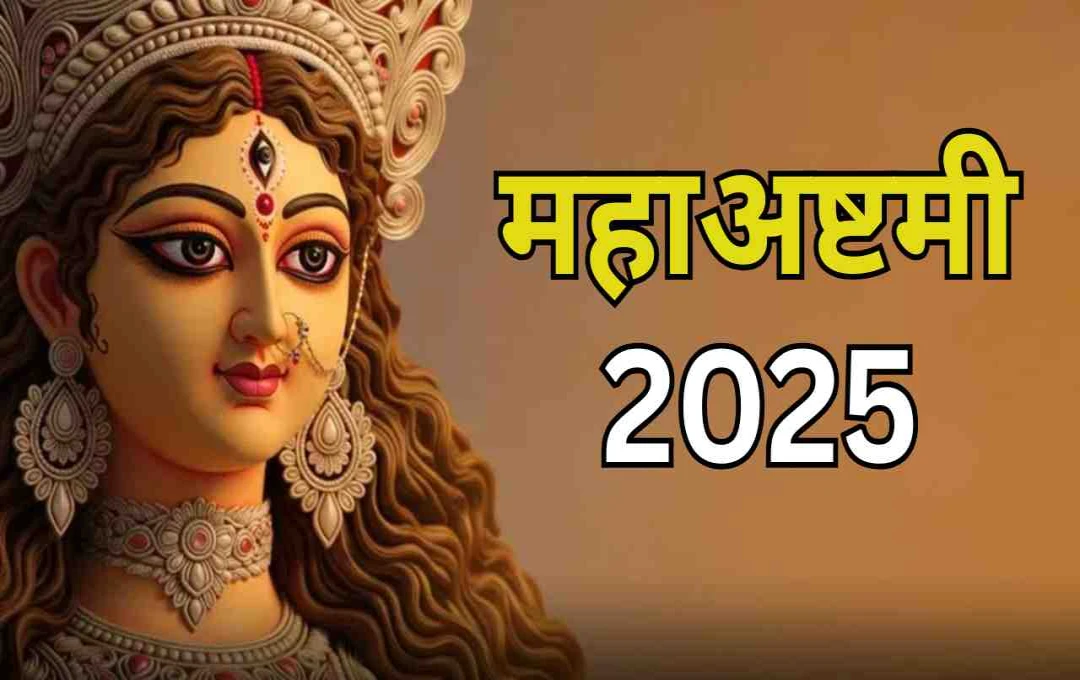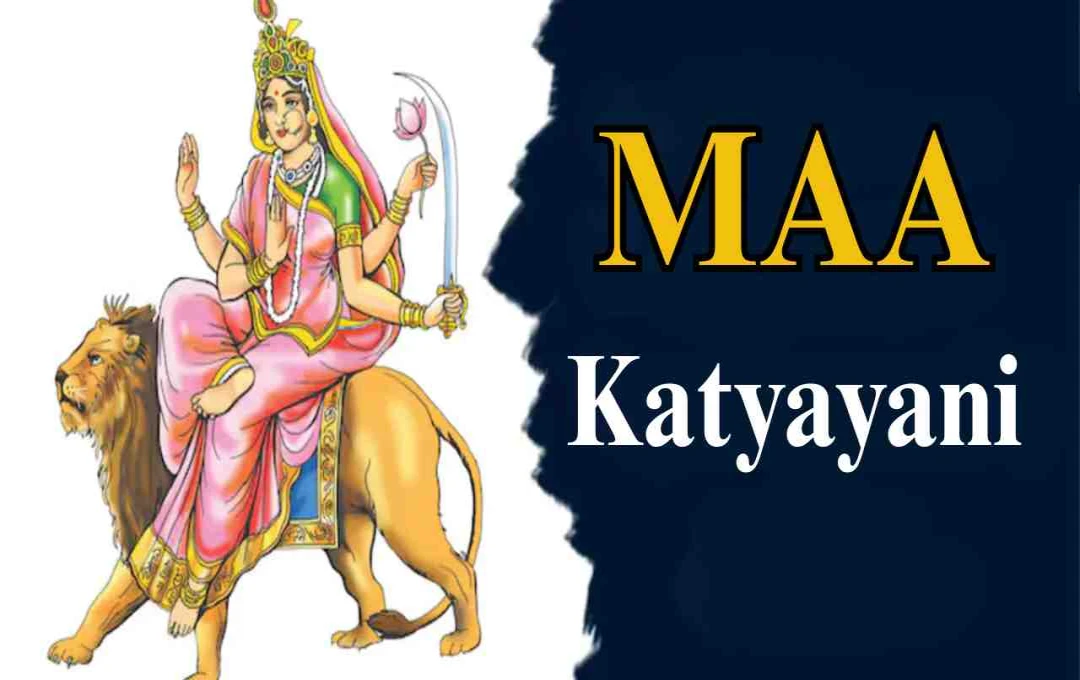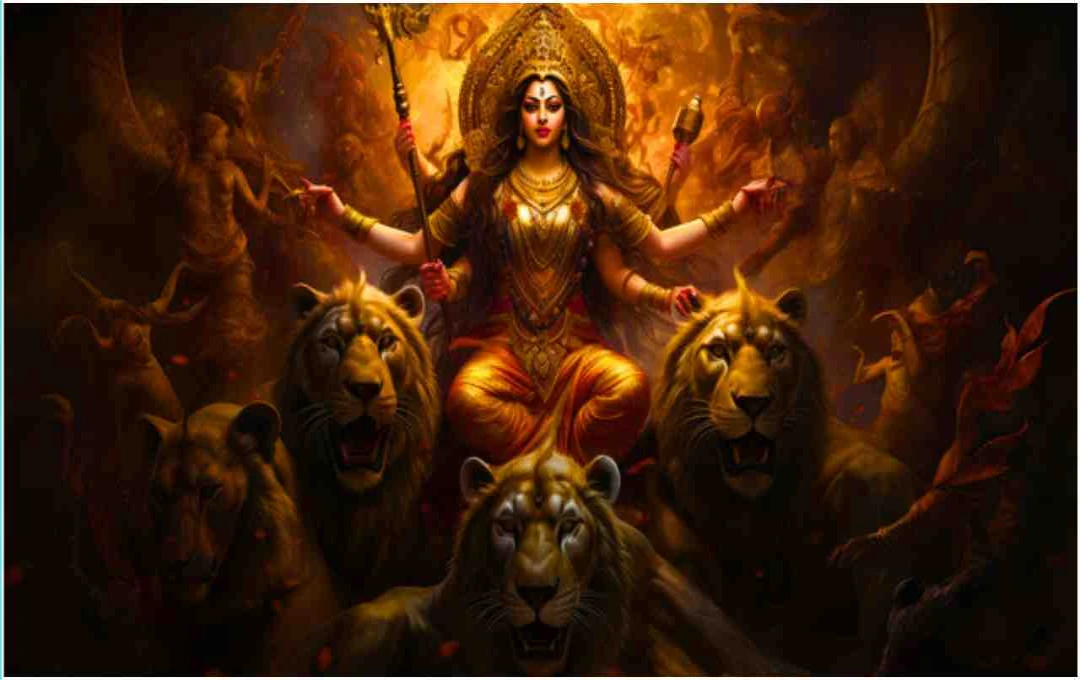In Hinduism, the cow is revered as a mother, and it is believed to be the abode of 33 crore deities. According to this belief, the first roti (flatbread) prepared during the process of making bread is offered to a cow. This religious tradition, associated with Bhut Yajna, holds not only spiritual significance but also symbolizes compassion, respect, and positive energy.
Religious and Social Significance: In Hinduism, the cow holds the status of a mother and is considered the dwelling place of 33 crore deities. In India, the first roti made during the bread-making process is offered to a cow, an ancient tradition linked to Bhut Yajna. This tradition is observed to bring positive energy, peace, and contentment to ancestors into the home. From a scientific perspective, being around cows also offers mental peace and health benefits. This is why this tradition remains significant from religious, social, and environmental viewpoints.
Why is the Cow Considered a Mother?
In Sanatana Dharma, the cow is accorded the status of a mother. According to ancient Hindu scriptures, all deities reside within the cow, and feeding it is believed to alleviate all kinds of suffering. This tradition is not merely limited to religious faith but is also considered a symbol of kindness, compassion, and respect in life.
The significance of feeding a cow extends deeply not only from a religious perspective but also from social and cultural viewpoints. Scriptures state that feeding a cow brings contentment to the souls of ancestors. This is why the cow holds an important place in many religious rituals, Shraddh (ancestor veneration), and Tarpan (libation offerings).
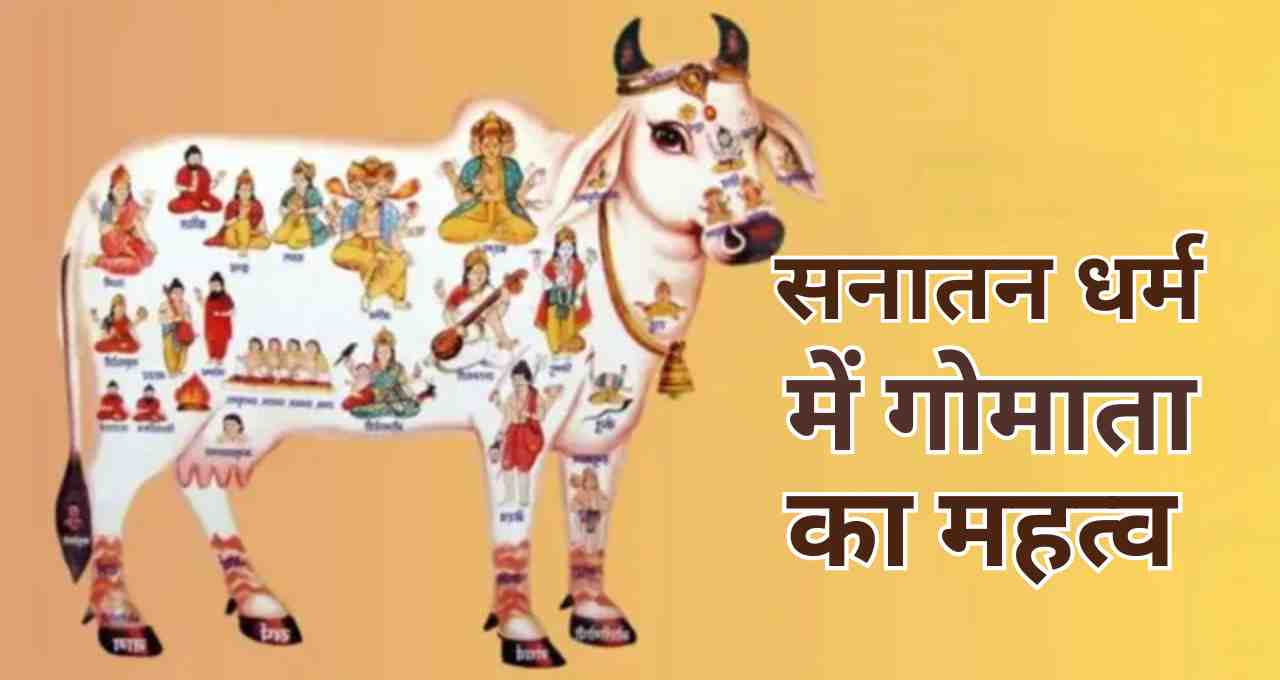
Bhut Yajna and the Significance of the Cow
- Deva Yajna
- Rishi Yajna
- Pitri Yajna
- Bhut Yajna
- Atithi Yajna
These five Yajnas are said to guide life towards Dharma (righteousness), Artha (prosperity), Kama (desire), and Moksha (liberation). Among them, Bhut Yajna holds special significance because it includes all living beings, creatures, and the environment. From small insects to large animals and birds, all are considered part of this Yajna.
Under Bhut Yajna, offering the first roti to a cow is considered not only a religious duty but also a symbol of compassion and kindness in life. It is believed that feeding a cow not only satisfies the souls of ancestors but also infuses the home with positive energy.
Religious and Social Perspective
The tradition of offering the first roti to a cow conveys the message that humans should respect all living beings. From a religious perspective, this act is considered a means to accrue merit (punya). If this tradition is observed in a home, it is believed that peace, prosperity, and positive energy prevail there.
Scriptures state that feeding a cow reduces suffering, diseases, and mental stress in the family. This tradition also teaches that in life, respect and compassion should extend not only to humans but to all living beings.
Scientific Perspective
Beyond religious beliefs, the cow also holds significance in our lives from a scientific perspective. It is believed that sitting near a cow or being in its presence transmits positive energy. Its milk, urine, and dung have several medicinal and agricultural uses. This not only brings mental peace but also has beneficial effects on both the environment and health.
The tradition of offering the first roti to a cow is a beautiful blend of religious belief and scientific perspective. It demonstrates how seriously respect for living beings and environmental balance were considered in ancient cultures.
Bhut Yajna and the Message of the Tradition
Under Bhut Yajna, feeding a cow is not merely a religious duty. It signifies humanity, compassion, and respect for all living beings. This Yajna includes not only large and sacred creatures but also tiny organisms. The tradition of offering the first roti to a cow conveys the message that one should focus on the well-being of all creatures in life.
In Hinduism, it is believed that feeding a cow reduces the influence of negative energies and maintains peace and harmony in the home. This is why this tradition has been observed for generations.
